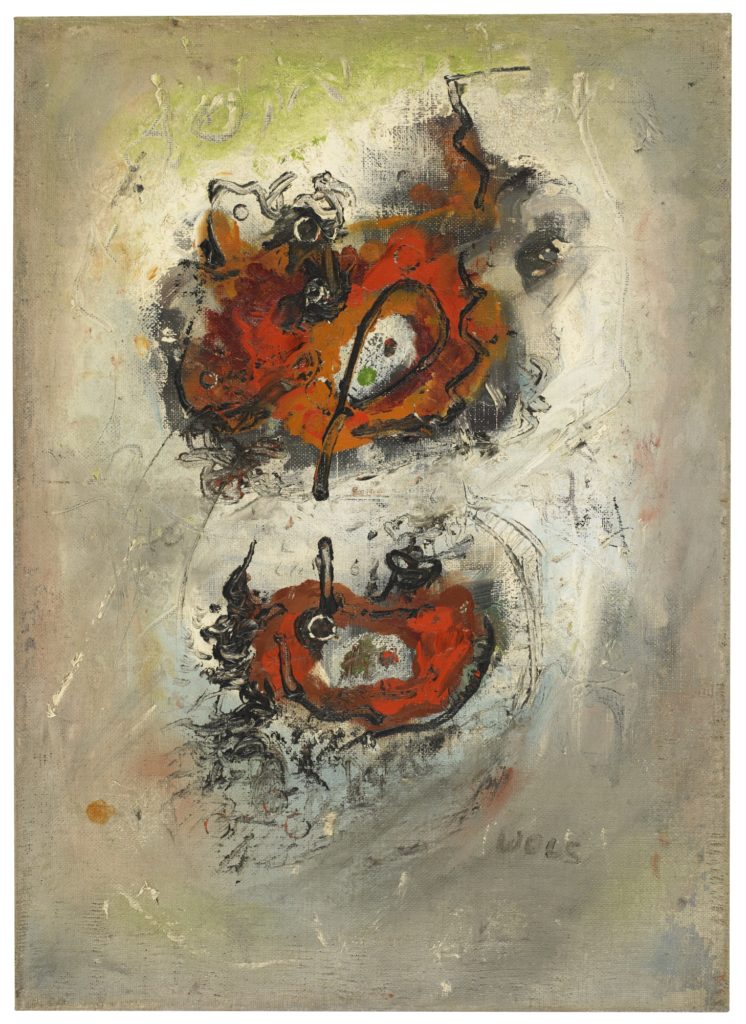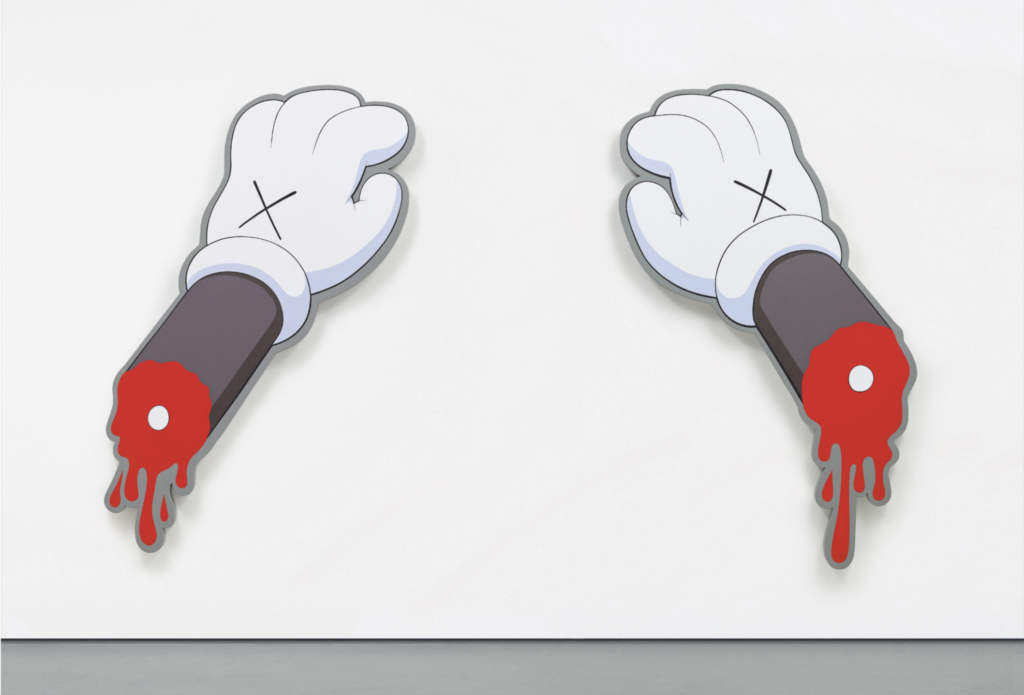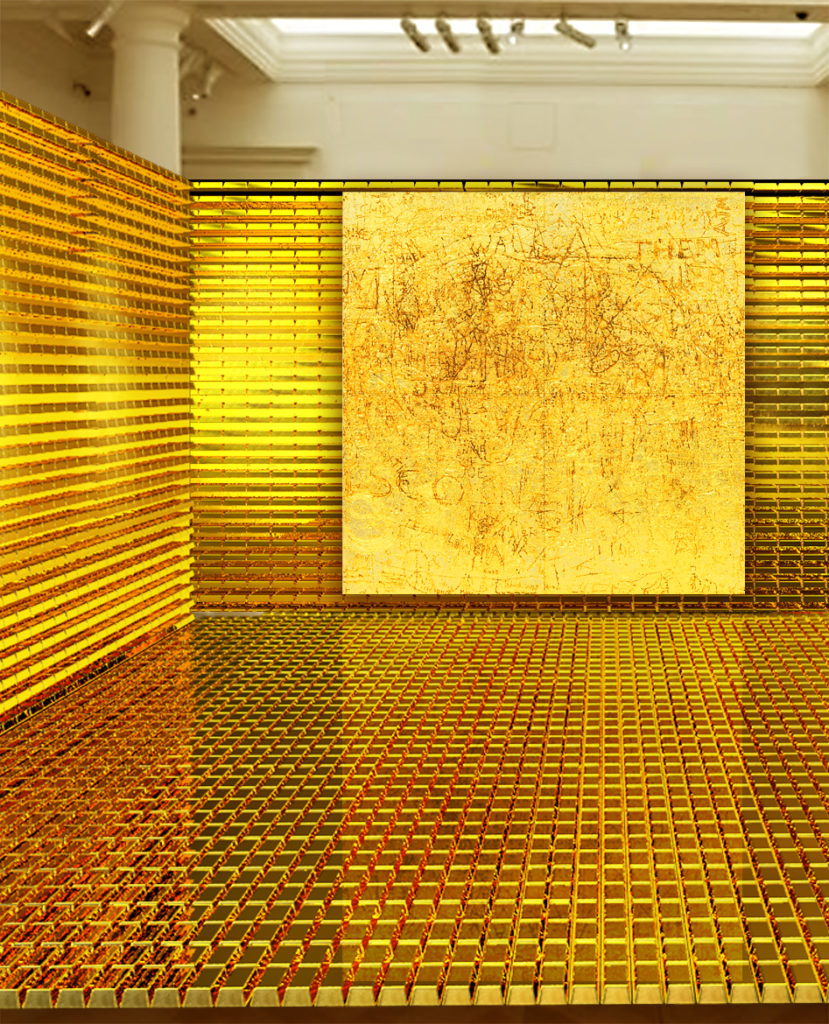Art World
Want to Get Rich Quick? Fresh From the London Auctions, Kenny Schachter Explains How to Game the System
Dollars for Doigs? Cash for KAWS? Come on down.

Dollars for Doigs? Cash for KAWS? Come on down.

Kenny Schachter

Where in the world have I been? It’s been a while since my last dispatch—I hope you enjoyed the break. My absence was largely down to the fact I avoided the recent art fairs in Madrid, Marrakech, Mexico City, and Maastricht, and those are just the events beginning with the letter M (Milan is next month). There is a lot of art being made and sold, more so than at any point in history, I’d venture. In addition to all the fairs I’ve missed, there was a smattering of the smaller contemporary-art auctions in New York at the beginning of the month, followed closely on the heels by a full slate of Impressionist, Modern, and contemporary sales in London.
My hometown for nearly the past 15 years, London is a city wounded but alive and kicking, staving off incursions from China, Brexit fallout, and a seething antipathy to foreign wealth. Despite the best efforts of UK populist political forces to quash business opportunities, the London cycle of sales hit a grand total of a cool billion dollars, a record, portending a wild ride on the upside for May. Even Phillips stepped up its game with the house’s best performance ever. Hankering to dance at the same party as Sotheby’s and Christie’s, they’re still trying to get past the door—which is more apparent in New York, the art-market ground zero (at least for now). The question is whether Phillips will be able to sustain its upward momentum and finally join the club.
Critic Jerry Saltz always (and obviously) weighs in at these junctures to inveigh against the market, and he did this time around too, but that’s like me passing judgment on quantum physics; i.e. he’s ill-equipped to judge what he knows not. Yes—as the critic groused on Instagram, before taking the post down—there are too many of same artists repeatedly up for sale, and yes they are predominantly white guys who paint(ed), but that’s because success affirms success and the market is a fickle beast. Though it’s a small and incestuous universe, it does shift (albeit like lava) from sale to sale; for every Christopher Wool, Rudolf Stingel, Peter Doig, Gerhard Richter, and Sigmar Polke up for sale, a select few become newly embraced by buyers, while others get relegated to the minors.
Before I delve into the latest auctions themselves, I will touch upon a transaction involving one of the most sought-after artists practicing today, and only because it is indicative of the subterfuge endemic in the art world. An advisor offered me a painting from a private collection that, at first blush, I wanted to own—I just couldn’t scratch the funds together myself. I immediately sent out feelers to a friend (or what passes for one in the art world), who said he knew of the work and disparaged it, while simultaneously angling to buy it through another go-between. I managed to negotiate a deal on a hope and a prayer that I’d presell the piece (before I had to pay), and called a few collector contenders to help make that happen.
I ultimately sold the painting to my original contact (who previously denigrated the work), who in turn sold it to a dealer “for her private collection, to be hung in her bedroom.” Needless to say, it never made it to the boudoir. When all was said and done, the work passed through the hands of five dealers before landing with a “collector” (no doubt on its way to the auction). So many links in the chain saddled the buyer with a whopping 80 percent increase over the initial asking price, a number that would warm the cockles of the heart of art-dealing, freeport-owning Yves Bouvier himself.
In contrast to art, classic car auctions proceed at a snail’s pace, where incremental bids are entertained in micro-amounts to the point of tedium lasting hours—whereas a New York contemporary evening sale at Christie’s could nail down near a bil in not much more than 60 minutes. I initially thought car sales would benefit from emulating art, but I’ve come to the opposite conclusion after visiting an auction where the consignor of a particular automotive lot blurted at the top of his lungs, and to no one in particular: “It’s a really fast car! Buy it! It’s worth more, c’mon!” I’ve seen artist/dealer Tony Shafrazi do that a couple of times from the front row, so why not encourage more audience participation? I can imagine the Mugrabis or Nahmads egging on potential buyers with similar such outbursts: “Hey, we bought this one nearly primary, this may be your only chance—grab it!” It would make for spectacular theater, an art-themed “Sleep No More.”
Guarantees are no doubt fueling auction activities, helping to dislodge works from collections—and, with the magic of third-party guarantees, speculators can attempt to cash in on trendy artists without an upfront investment, risking not even their pocket change (and some, I know for a fact, have barely that). I should launch a YouTube instructional video: No money down! How to guarantee art and make millions! On that front, word in the aisles was that John Sayegh-Belchatowski was the (very) successful guarantor of Sotheby’s Christopher Wool abstract (and a handful of other lots) that made nearly $15 million on a low estimate of about $6 million, indicating a hefty profit. A peek at Belchatowski’s new Instagram account seems to affirm this with a post including the Wool, described as “The best of the series ever! Much more powerful than the one in the Daros collection.” For all I know, he may have guaranteed a Cecily Brown painting that sold for $1.7 million at Sotheby’s, too—in a previous post of that canvas he described the artist as #thenextdekooning.
An aside: it never ceases to amaze me how auction houses heighten and brighten the colors of art in catalogues (printed and online) as opposed to the inevitably darker reality of the works in person. Call it the art-world equivalent of false advertising—imagine a voluptuous-looking picture of a fast-food hamburger, to be contrasted with the gnarly grey matter ultimately served up. Buyer beware. In the saleroom, an auctioneer kindly pointed out, mid-bid, that a random lot was “…a museum quality picture.” Solid reassurance, no doubt.

Sotheby’s window-dresses (in the extreme) a Lynn Chadwick. What could possibly be next? I shudder…. Photo courtesy of Kenny Schachter.
The WTFA (What The Fuck Award) of the recent auction cycle goes, hands down, to Sotheby’s Impressionist and Modern department for the sale of a Lynn Chadwick sculpture that, estimated at about $800,000 to $1 million, sold for a whopping $3,500,000. Chadwick’s walking figures were displayed in a room wallpapered with an alpine mountain scene and installed in a foot of fake snow as if they were trudging home from the slopes (regardless of the fact there was enough of the real stuff outside). It was like a Bloomingdale’s Christmas window display, only with an extra helping of cheese. I can only imagine the specialists’ meeting where the idea was hatched.
Reverting to pomp and spectacle, regardless of the artist’s intent (it helps when they are dead), was no less absurd than pairing a, cough, somewhat real Leonardo with Warhol’s depiction of a Leonardo in a contemporary sale. But Sotheby’s farcical feat will surely open the floodgates to the Disneyfication of future auction presentations. If I was the Chadwick purchaser, I’d insist it come with the backdrop and props.
For a collector, the downside of a high-profile Architectural Digest feature is that when the art on the walls wends its way swiftly back to market, everyone will know. Such was the case of Oscar Englebert, a Swedish investor whose company’s share price fell 39 percent in the course of an insider-trading investigation last September into Oscar Properties chairman Jakob Grinbaum, which was dropped two months later. (See chart below.) Engelbert was the seller of Sotheby’s Mike Kelley, Martin Kippenberger, Rosemary Trockel, and Sherrie Levine as well as other works privately.

Wols (1913–1951) was the pseudonym of Alfred Otto Wolfgang Schulze, a German painter and photographer. His work predominantly sells in Europe, carrying a record of $4,221,371 (at Sotheby’s London, 2011). This go-round, his small painting in Sotheby’s day sale with an estimate of $277,980 to $347,475 sold for $1,663,710. All of Wols’s 10 highest auction prices were lodged in London or Paris. It goes to show that some artists are still provincially defined geographically, like Fairfield Porter in the US and Roger Hilton in the UK. (I will organize a book and drawing show on Hilton in the fall to re-situate the work in an international contemporary context.)

Wols (German 1913-51) sold at Sotheby’s for $1,663,710, nearly five times above high estimate. Photo courtesy of Sotheby’s.
Phillips killed it with the widely reported successful sales of Picasso and Matisse incorporated into their contemporary auction to boost results and broaden their reach. That wasn’t always the case: when Phillips attempted to rent space in Antwerp a short while ago, the landlord insisted on the prepayment of two years rent, with my articles detailing the house’s previous performances in tow. This time around there was no further cause for concern, including a $12 million record for the nearly 35-foot-long Mark Bradford. More amazing than the Bradford bucks was the fact the painting was originally 70-feet-long and was later cut in two by the artist. Though I successfully sold a painting with Phillips private treaty, they still managed to buy in another work I attempted to sell on behalf of a friend. But hats off to them! I’d wager they will build on the success in May, New York.
Market phenom KAWS, born in 1974 as Brian Donnelly, has joined George Condo and Martin Kippenberger in the stable of venerable secondary dealer Per Skarstedt. Hmm, between Wols and KAWS, I should change my name to KAS, for Kenneth Anthony Schachter. Like Oscar Engelbert, KAWS was also the subject of a lavish Architectural Digest spread showcasing his house and art and design collection with works by Condo, Keith Haring, Mike Kelley, Carroll Dunham, and loads more. I appreciate his work and the enormity of his success—I just find his KAWS output more entertainment than conceptual or painterly. (I’m not jealous if that’s what you’re thinking.)

KAWS for alarm: an estimate-tripling paintings sold by Phillips for $1,259,228.61, nearly four times above its high estimate. Image courtesy of Phillips.
Nevertheless, Phillips set two successive records for the artist, including a sculpture for nearly $1 million against a low estimate of $400,000 (his previous high was only $430,000, set in October 2017) and the painting Keep Moving, a diptych of two grasping severed hands dripping blood and guts that unexpectedly did even better; estimated at just over $200,000, the painting sold for a record topping $1.25 million. I have a feeling KAWS’s art collection is about to expand exponentially.
Phillips had another strong performance with Rudolf Stingel’s electroformed, copper-plated-nickel-and-gold cast from 2012. With a low estimate of approximately $5.5 million, the piece sold for nearly $8 million—a record for the series. The last cast made $6,875,000 in May 2017, meaning the Phillips result constitutes an increase of more than 15 percent in 10 months, and marks Stingel’s second-highest price to date. Thankfully, Phillips achieved the result without resorting to the shenanigans of Sotheby’s, presenting the bling-thing in a room full of gold bricks, for instance.

Could this be next? A ramped-up Rudolf Stingel for the next auction cycle. Collage image by Kenny Schachter.
On another, less successful Stingel note, Christie’s evening sale featured a giant portrait of the artist looking young and handsome, estimated at about $3.9 million, which only managed to snare just under $3.7 million. Stingel’s portraits are a rare case where age is valued more than beauty: his all-time record of $10.5 million was set for another similarly scaled work of the artist as a brooding middle-aged man.
Rarely do great Sigmar Polke paintings come up for sale, and the fact that his estate has been slow-going with a catalogue of his extant works since his untimely 2010 death does his market no favors. By comparison, Gerhard Richter has a bigger output, and his catalogues raisonnés have catalogues raisonnés. This could possibly account for the poor performance of an early 1967 Polke Pop painting that Christie’s couldn’t sell for more than the low estimate of about $1 million. The piece was easily worth more.
There is a glut of auctions as much as there are too many art fairs—and, lordy, there are, as you’ll see in my next column—but the market hasn’t missed a beat. Wave after wave of art on offer is unfathomably absorbed into an ever-burgeoning international market. And for that, I, for one, am eminently grateful.
[This column has been updated as of May 5, 2018.]